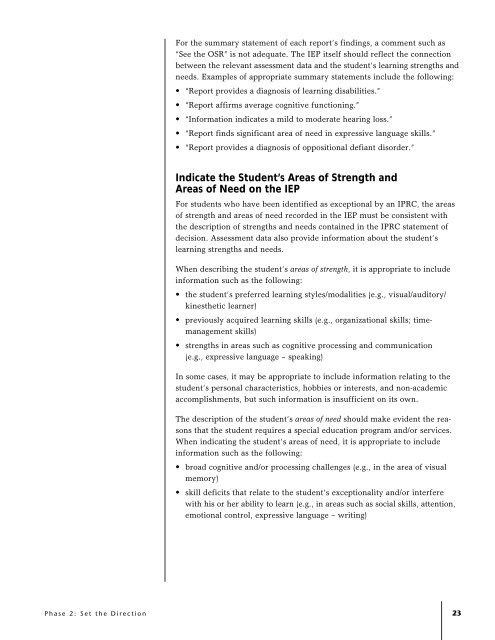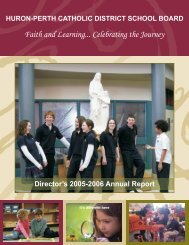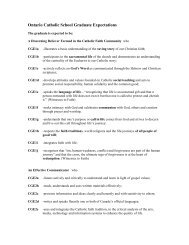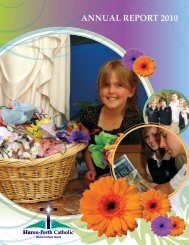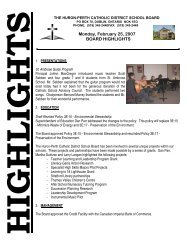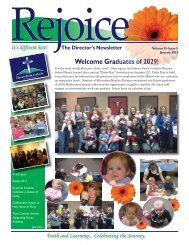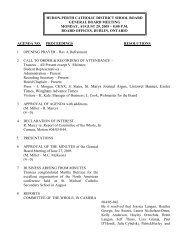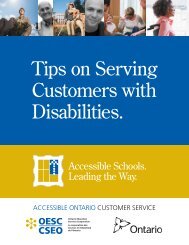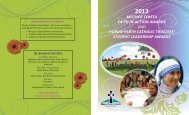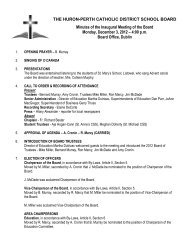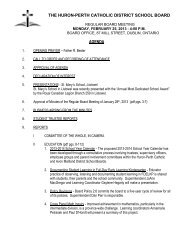The Individual Education Plan (IEP) - A Resource Guide, 2004
The Individual Education Plan (IEP) - A Resource Guide, 2004
The Individual Education Plan (IEP) - A Resource Guide, 2004
Create successful ePaper yourself
Turn your PDF publications into a flip-book with our unique Google optimized e-Paper software.
For the summary statement of each report’s findings, a comment such as<br />
“See the OSR” is not adequate. <strong>The</strong> <strong>IEP</strong> itself should reflect the connection<br />
between the relevant assessment data and the student’s learning strengths and<br />
needs. Examples of appropriate summary statements include the following:<br />
• “Report provides a diagnosis of learning disabilities.”<br />
• “Report affirms average cognitive functioning.”<br />
• “Information indicates a mild to moderate hearing loss.”<br />
• “Report finds significant area of need in expressive language skills.”<br />
• “Report provides a diagnosis of oppositional defiant disorder.”<br />
Indicate the Student’s Areas of Strength and<br />
Areas of Need on the <strong>IEP</strong><br />
For students who have been identified as exceptional by an IPRC, the areas<br />
of strength and areas of need recorded in the <strong>IEP</strong> must be consistent with<br />
the description of strengths and needs contained in the IPRC statement of<br />
decision. Assessment data also provide information about the student’s<br />
learning strengths and needs.<br />
When describing the student’s areas of strength, it is appropriate to include<br />
information such as the following:<br />
• the student’s preferred learning styles/modalities (e.g., visual/auditory/<br />
kinesthetic learner)<br />
• previously acquired learning skills (e.g., organizational skills; timemanagement<br />
skills)<br />
• strengths in areas such as cognitive processing and communication<br />
(e.g., expressive language – speaking)<br />
In some cases, it may be appropriate to include information relating to the<br />
student’s personal characteristics, hobbies or interests, and non-academic<br />
accomplishments, but such information is insufficient on its own.<br />
<strong>The</strong> description of the student’s areas of need should make evident the reasons<br />
that the student requires a special education program and/or services.<br />
When indicating the student’s areas of need, it is appropriate to include<br />
information such as the following:<br />
• broad cognitive and/or processing challenges (e.g., in the area of visual<br />
memory)<br />
• skill deficits that relate to the student’s exceptionality and/or interfere<br />
with his or her ability to learn (e.g., in areas such as social skills, attention,<br />
emotional control, expressive language – writing)<br />
Phase 2: Set the Direction<br />
23


